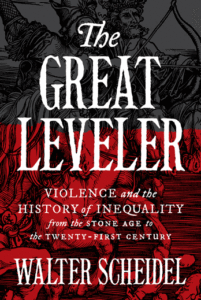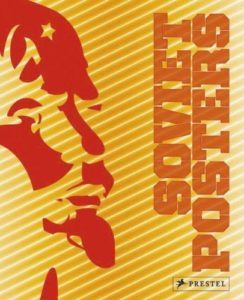Walter Scheidel – The Great Leveler: Violence and the History of Inequality from the Stone Age to the Twenty-First Century (Princeton University Press 2017)
Ah, more liberal-conservative historical revisionist drivel. Scheidel’s book follows in the ignoble footsteps of Steven Pinker‘s moronic The Better Angels of Our Nature: Why Violence Has Declined and Carmen Reinhart and Kenneth Rogoff‘s discredited This Time Is Different: Eight Centuries of Financial Folly. That is to say it sidesteps and obscures crucial philosophical and ideological (and moral) questions in favor of lots and lots of quantitative data, analyzed with dubious methodologies.
I didn’t actually read this book. What I did do is a litmus test. I looked up anything about the Bolshevik revolution in the index, and read those pages. Scheidel cites Niall Ferguson (!!!!) primarily, and, in much the same way soviet history scholar Moshe Lewin has eloquently described regarding similar writings, engages in the lowest kind of anti-communist propaganda by singling out isolated incidents stripped of context and presenting them as representative.
Fortunately there is a book that already existed to (premptively) rebut Scheidel’s: War and Revolution: Rethinking the 20th Century, by Domenico Losurdo, which aimed to offer a “vigorous riposte” to “imperial revivalists”. The aim of Scheidel and his ilk is to assert that “there is no alternative” to inequality, and anything that redresses inequality (i.e., revolution) cannot be contemplated. But why can’t it be contemplated? Scheidel does not engage this question in any serious way. But that is his aim: to bracket that question out of consideration and normalize the “structural violence” of actually-existing inequality, by lamenting it from a distance but taking any pragmatic solutions to it off the table. He is not concerned with the horrors of the status quo, only the alleged horrors that accompany any change of the status quo. To put it more bluntly, The Great Leveler is nothing but an apology for the status quo. As Robespierre put it long ago in response to odious fools much like Scheidel with their cynical “humanitarian” concerns, “A sensibility that wails almost exclusively over the enemies of liberty seems suspect to me. Stop shaking the tyrant’s bloody robe in my face, or I will believe that you wish to put Rome in chains.”
Take the opportunity to make a hard pass on Scheidel’s book and perhaps instead look to something by Losurdo.



